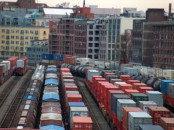Economic challenges are mounting
Challenges related to real, external economy will persist throughout fiscal year 2021-22

There are two main challenges for Pakistan’s economy in fiscal year 2021-22. One is inflation and the other is current account management and both of them are inter-linked.
If inflation does not fall below the 9% threshold, it will have an overall negative impact on economic growth which will in turn make it difficult to manage the current account deficit. Lower GDP growth in Pakistan is often accompanied by lower growth in non-debt creating foreign exchange inflows which makes current account management difficult. To plug this deficit, the country is forced to borrow higher amount of foreign exchange from international financial institutions (IFIs) or foreign nations.
With the end of the first quarter of FY22, it is being widely anticipated that Pakistan may not be able to achieve this year’s GDP growth target of 4.8%. The Asian Development Bank recently said that Pakistan’s GDP could grow at 4% and Fitch Solutions or Fitch Ratings—one of the top three global credit rating agencies—stated that growth could clock in at 4.2%.
Their assumption that the economic growth this year may not reach the targeted level of 4.8% is based on anticipated levels of aggregative consumption and expenses—the two main measures of growth. However signs of a slower-than-targeted growth are all too obvious since agricultural growth is expected to suffer because of 40% lower rainfall this year compared to last year, large-scale manufacturing is growing but not at the pace that can help achieve an overall growth target of 4.8%, small scale industries continue to suffer due to Covid-19 related trade and business restrictions. In the services sector, logistics, transportation and trade-related small and medium enterprises and retail businesses are not growing at the desired pace—also due to Covid-19 restrictions. So, let’s admit the uncomforting fact that Pakistan is likely to miss the 4.8% GDP growth target this year.
Cause and effect
This means that Pakistan would need additional foreign funding—even after rescheduling of some of the external debts. Moreover, this also means that the country will be forced to divert sizable development funds for servicing of domestic debt. In the first case, the consequences would be seen in the form of expansion in the current account deficit, further depreciation of rupee and rise in imported inflation. And in the second case, the adverse effects would include lesser-than-targeted allocation on transfer payments or cash handouts under Ehsaas and Benazir Income Support schemes. In addition, higher domestic debt servicing would necessitate larger government borrowings from commercial banks thereby crowding out the private sector. Lower intake of formal bank credit by the private sector would, in turn, lead to decline in output and higher prices.
To sum up the above discussion, we can say that challenges related to the real and external economy may not only persist throughout this fiscal year but also compound.
The Pakistan Tehreek-e-Insaf (PTI) policymakers are trying hard to deal with several challenges of the real economy such as lesser than targeted economic growth, inflation, lesser than required tax generation and low growth in agriculture, industry and services sectors. They may partly succeed but the problem is that none of these issues can be addressed adequately without fixing the challenges of the external economy. In fact, these challenges are so huge that it might take at least a few years for Pakistan to address them adequately with a minimum opportunity cost.
Suggestions
Take the example of the surging trade deficit. The trade deficit has soared to a high level because the economy started growing while Pakistan’s base of finished and intermediate industrial goods remained shallow. Unless local industry is encouraged and incentivised to produce goods that may compete well with imported finished goods in food, clothing and household items sectors, imports of these items cannot be curtailed to a large extent only by increasing cash margin on letters of imports.
Similarly, the manufacturing capability of industrial raw material and inputs needs to be boosted to slash import bill of raw material and inputs by 20-30%. We use imported buttons and zips as well as packaging material to manufacture textile goods for domestic use and exports.
With regard to exports, Pakistan’s dependency has traditionally been on textiles, food and a small range of manufactured items such as leather, engineering, sports and surgical goods. Recently, the country began exporting medicines and surgical items in huge numbers thanks to the Covid-19 pandemic. Food exports are of no real value because we spend twice the amount on imports of food items than we earn from food exports. We continue to remain net exporter in textile segment but there is a need to reduce the import bill of raw material and inputs of textile sector including cotton.
Remittances
So, what we are left with? Remittances. Right. Remittances grew in the last two fiscal years at a speed seldom seen before. This has made remittances the number one source of non-debt creating forex inflows. But July-August 2021 data showed that even the growth of remittances was losing steam. Its a small wonder that the current account deficit in July-August expanded and it is likely to continue to widen throughout this year. What makes management of the external sector difficult is the fact that Pakistan’s external debt volumes are large and servicing them consumes a large part of the foreign exchange earned by the country every year.
Unless Pakistan moderates its domestic consumption and removes structural flaws in the export sector, nothing can help reduce its imports bill substantially. However, moderation of consumption and the resource reallocation required for removing structural flaws in exports will also take a toll on the GDP growth.
The political leadership of the country must realise that foregoing an unrealistically high GDP growth target for preparing the ground for sustainable growth of the economy is the only way forward.
The writer is an electronic engineer and pursuing a master’s degree
Published in The Express Tribune, October 11th, 2021.
Like Business on Facebook, follow @TribuneBiz on Twitter to stay informed and join in the conversation.



















COMMENTS
Comments are moderated and generally will be posted if they are on-topic and not abusive.
For more information, please see our Comments FAQ